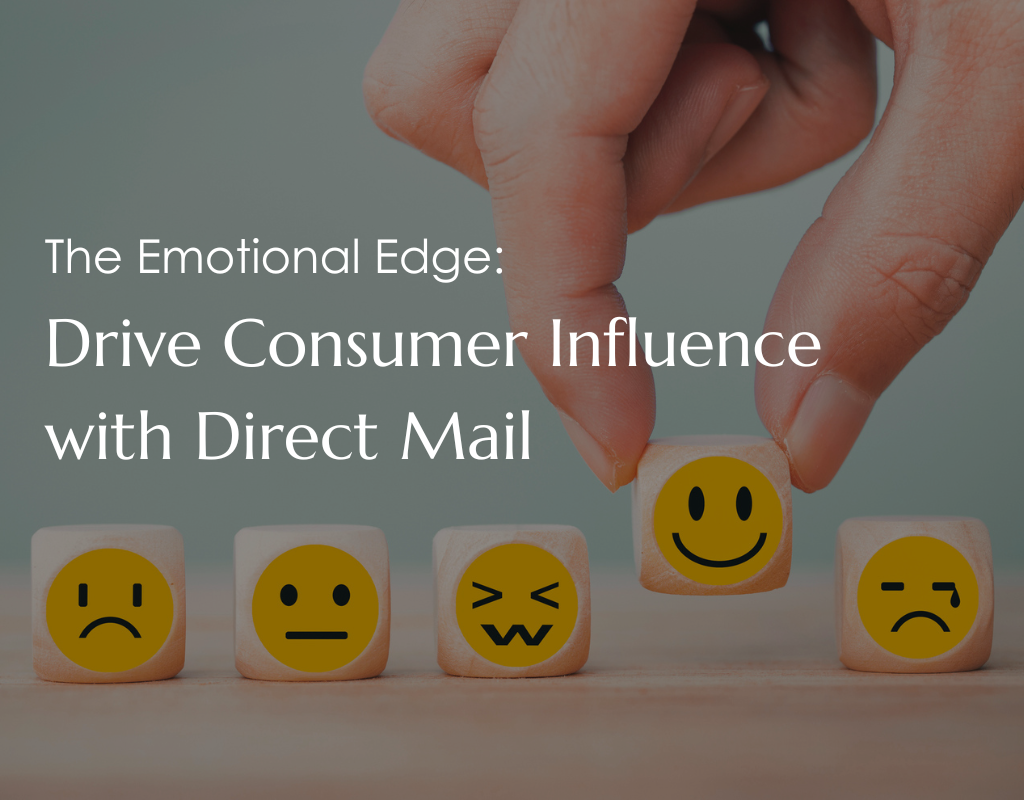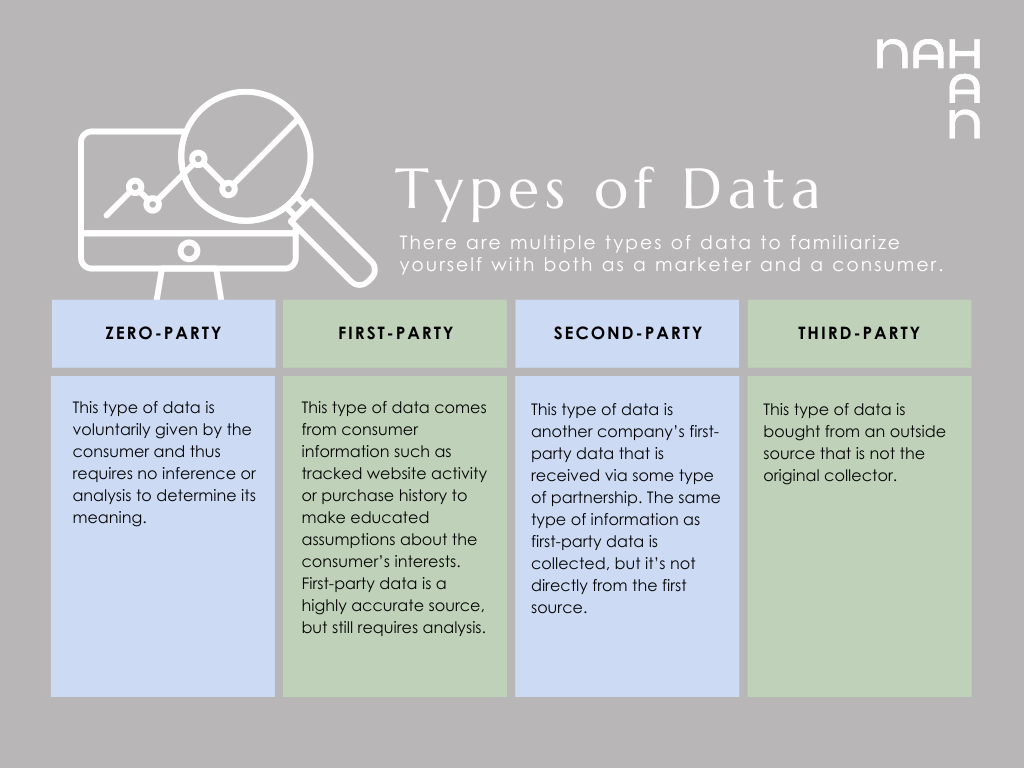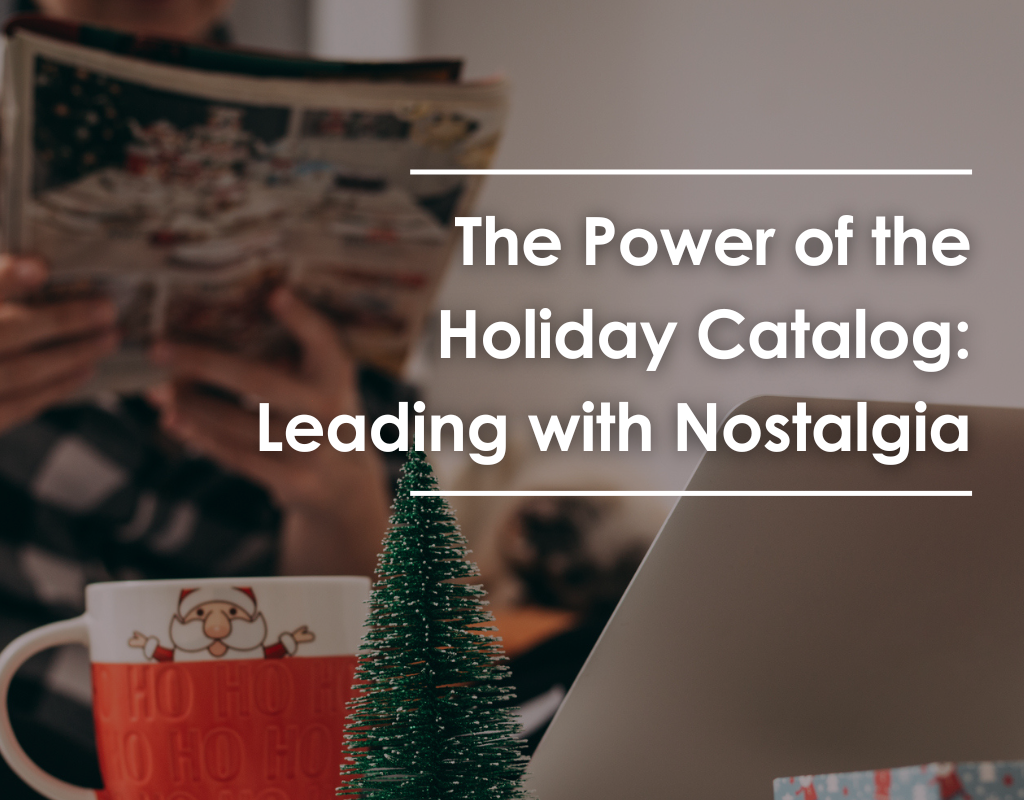Direct mail holds a unique advantage that digital channels such as social media and email fail to replicate: the ability to forge genuine connections and evoke powerful emotions through touch. With crowded inboxes and social ads fighting for attention with the scrolling consumer, physical mail presents an opportunity to connect like no other.
Emotionally resonating direct mail copy has the potential to create a lasting impact, influencing consumer behavior and driving conversions.
In this article, we will explore how direct mail can engage recipients on a deeper level, highlighting the unparalleled impact it can have in a world dominated by screens and pixels. Understanding and harnessing the emotional potential of direct mail campaigns is vital for marketers seeking to create lasting impressions and influence consumer behavior.
Understanding the Power of Emotion

Emotions play a fundamental role in human decision-making. Countless studies have shown that emotions, rather than logic, often guide our choices. Psychologist Gerald L. Core, said human thought is “often automatic, heuristic, unconscious, and guided by emotion instead of being strictly logical and reasoned.”
When it comes to marketing, tapping into these emotions can be a powerful tool to connect with consumers on a deeper level. Direct mail has a unique advantage in this regard, as it allows for a tangible and personal experience that can engage multiple senses. From the initial mailbox experience, when the consumer touches and feels the package and makes a decision to engage, it is a living and breathing channel.
According to Nahan’s Executive Creative Director, Mike Dietz, “Evoking emotion through tactile components like paper weight, texture and treatments is a major driving force behind every successful direct mail campaign. It’s the key to creating a lasting impression and influencing consumer behavior.” By leveraging the power of emotion, marketers can create a memorable experience that resonates with recipients long after the mail has been opened.
The Role of Resonating Copy

The written word holds immense power to evoke emotions and shape perceptions. In direct mail, resonating copy acts as a catalyst to provoke an emotional response from the recipient. It goes beyond merely conveying information; it aims to captivate, inspire, and persuade. “In direct mail, words are more than ink on paper. They have the potential to connect with readers on a personal level, driving them to take action,” says Mike Dietz.
By crafting compelling and relatable copy, marketers can tap into the desires, fears, and aspirations of the target audience, creating an emotional bond that drives engagement.
Let’s think about a credit card example. When students are going off to college, it is a prime time for credit card companies to target them with student credit card offers with low interest rates and tempting rewards. The emotional direction a direct mailer uses to target college students considering a credit card is different from a high-salary professional who might be seeking a high credit limit. With direct mail, marketers can create highly personalized messaging that speaks to them.
By harnessing the power of four-color variable data printing, marketers can create unique 1:1 messaging to consumers. The internal components of a direct mail piece allows the marketer to create a journey unlike any other channel, with the ability to utilize a large variety of configurations to address barriers, develop relevant messaging tone that is focused exclusively on the individual consumer. Dietz says, “The ability to combine actionable data inputs and dynamic 4 color digital technology allows marketers to leverage direct mail to create a unique 1:1 experience.”
Creating Emotional Connections
Harvard Professor, Gerald Zaltman, says that 95% of purchasing decisions are subconscious. To create emotional connections, direct mail campaigns must be rooted in a deep understanding of the target audience. You must know who you are trying to reach before you write anything. Market research and customer insights are essential in developing resonating copy that strikes a chord with recipients. By identifying the pain points, aspirations, and motivations of the target market, marketers can tailor their messaging to elicit specific emotional responses and respond positively to the call to action. Here comes the advantage of variable data printing again.
Let’s think of the example of life insurance. A consumer cares about his or her family and wants them to be financially stable in the event of their passing. This is partially an emotion-based decision. Direct mailers can appeal to that desire not to leave behind familial financial strains. How a marketer appeals to that desire in the copy affects the consumer’s reaction.
Leveraging Emotional Triggers
Different emotions can be leveraged strategically in direct mail campaigns to achieve specific goals. For instance, a sense of urgency can be invoked through time-limited offers or exclusive discounts. Fear of missing out can drive recipients to take immediate action, ensuring a higher response rate. On the other hand, appeals to happiness, joy, or nostalgia can create positive associations with a brand or product, fostering long-term loyalty. By aligning the emotional tone with the desired outcome, marketers can increase the effectiveness of their direct mail campaigns and drive meaningful results.
Measuring Success and Iterating

The effectiveness of direct mail campaigns can be measured through various metrics, such as response rate, conversion rate, or customer lifetime value. By analyzing these metrics, marketers can gauge the impact of their emotional appeals and resonating copy. It is essential to track and evaluate the campaign’s performance to understand what worked and what can be improved upon in future iterations. “Direct mail campaigns should be seen as an iterative process. By learning from data and feedback, we can refine our messaging to better connect with our audience’s emotions and achieve greater success,“ says Mike Dietz.
Conclusion
Emotions play a crucial role in decision-making, and direct mail has the capacity to evoke those emotions in personalized and tangible ways that digital can’t live up to. Through empathy and understanding of the target audience, marketers can create copy that resonates on a personal level, building strong emotional connections.
Want more direct mail relevant content? We’ve got plenty. Twice per month we send our subscribers top thought leadership content on the direct mail industry.





